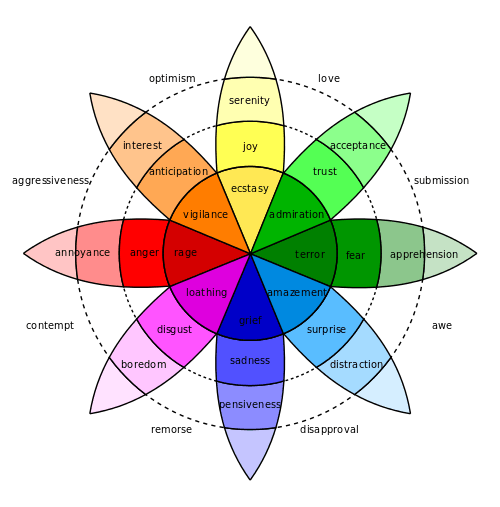Four Cornerstone Model of Emotional Intelligence
The Four Cornerstone Model of Emotional Intelligence is based on emotional literacy, emotional fitness, emotional depth, and emotional alchemy.[1][2][3][4][5] The model moves emotional intelligence out of the realm of psychological analysis and philosophical theories and instead focuses on knowledge, exploration and practical application.[6]
Concept
The Four cornerstone model was developed by Ayman Sawaf and Robert Cooper in 1997.[5][7] Multiple studies and research carried out in regards to emotional intelligence based on this model revealed a marginal qualitative difference between the public and private sector executives and expand on the usage of this model.[7] The concept focuses on the fact that creative involvement in a stimulating job, opportunity, or an exciting discussion results in an increase in alertness, emotional energy, and performance. Repetitive and boring tasks on the other hand put the performer in danger of dismay, lack of efficiency and making mistakes. This generates its explanation from the fact that professionalism is based on self-discipline, inner guidance and emotional drive.[5][8]
The Four Factors
The four cornerstone model is mixed model of emotional intelligence based on four factors labeled as cornerstones:[5][9][10]
- Emotional literacy – the ability to identify, respect, and express feelings appropriately. This may include practical intuition, emotional honesty, emotional energy and emotional feedback.[1][4]
- Emotional fitness – consists of trust resilience, authenticity and renewal.[1][4]
- Emotional depth – involves applying integrity and core values in influencing others without manipulation or control.[1][4]
- Emotional alchemy – blending and tuning emotions to find opportunities and realization of such opportunities by creativity, cognitive thinking and rhetoric.[1][4]
References
- 1 2 3 4 5 Emotional Intelligence and Leadership Style: An Investigation Within a Major Telecommunications Company. ProQuest. 2007-01-01. ISBN 9780549319085.
- ↑ A. Kerr, Barbara (2009). "Connecting Emotional Intelligence to Success in the Workplace" (PDF). HRDQ.
- ↑ Kewalramani, Soni; Agrawal, Manju; Rastogi, Mukta Rani (2015-08-10). "Models of emotional intelligence: Similarities and discrepancies". Indian Journal of Positive Psychology. 6 (2). ISSN 2229-4937.
- 1 2 3 4 5 "Emotional Intelligence and Burnout among Teachers in a Rural Florida School District". ufdc.ufl.edu. Retrieved 2015-09-23.
- 1 2 3 4 Cooper, Robert K.; Sawaf, Ayman (1998-01-01). Executive EQ: Emotional Intelligence in Leadership and Organizations. Penguin. ISBN 9780399524042.
- ↑ Venkoba Narayanappa. "A Study of General Teaching Competency of Women Student Teachers in Relation to their Interest in Teaching, Emotional Intelligence, Adjustment and Personality" (PDF). Karnataka State women University, Bijapur. Retrieved 23 September 2015.
- 1 2 Geetika, Kaushal; Jigisha, Dholakia. "Emotional Intelligence at the Workplace: A preliminary study of male executives in the Public and Private sector organisations".
- ↑ MARIA VERMEULEN, ELIZABETH (August 2001). "EMOTIONAL INTELLIGENCE AS DETERMINANTOF THE IDEAL CHARACTERISTICS TO DELIVER THE BEST SERVICE TO CUSTOMERS" (PDF). UNIVERSITY OF WALES.
- ↑ "Pre-Doctoral Graduate Personal Emotional Intelligence Assessment - Sumo Nova". sumonova.com. Retrieved 2015-09-23.
- ↑ Aneesh Kurian (2013). "Adolescents And Emotional Intelligence: A Critical Analysis" (PDF). Aarhat Multidisciplinary International Education Research Journal. 2 (5). ISSN 2278-5655. Retrieved 23 September 2015.
Further reading
- Goleman, Daniel (1996). Emotional Intelligence: Why It Can Matter More Than IQ. Bantam Books. ISBN 978-0-553-38371-3.
- Corcoran, R. P.; Tormey, R. (2012). Developing emotionally competent teachers: Emotional intelligence and pre-service teacher education. Peter Lang AG. ISBN 978-3034307864.
